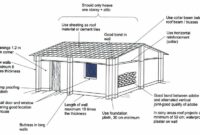Heatwave Disaster – Heatwaves are prolonged periods of excessively high temperatures, often combined with high humidity.
They can pose serious health risks, cause widespread power outages, and disrupt daily life. Preparing for a heatwave disaster is essential to mitigate its effects.
Here’s a comprehensive guide on what to do before, during, and after a heatwave to protect yourself and others.
1. Understanding the Risks
Heatwaves can lead to severe dehydration, heat exhaustion, and heat stroke, particularly among vulnerable populations such as the elderly, infants, and people with pre-existing health conditions. Knowing the risks associated with heatwaves is the first step in preparation.
- Health Impacts: Heatwaves increase the risk of cardiovascular issues, respiratory problems, and heat-related illnesses. Dehydration and heat stress can exacerbate chronic conditions.
- Infrastructure Strain: Extreme heat can overload power grids, leading to blackouts. Roads and railways may buckle, and transportation systems can face delays.
- Environmental Consequences: Prolonged heat can increase the risk of wildfires, droughts, and water shortages.
2. Pre-Heatwave Preparation
To minimize the impact of a heatwave, it’s crucial to prepare in advance:
a) Stay Informed
- Monitor Weather Reports: Pay attention to weather forecasts and heatwave warnings issued by local meteorological agencies. Install weather apps on your phone for real-time updates.
- Know Your Area’s Risk: If your region is prone to heatwaves, familiarize yourself with emergency plans and cooling centers in your community.
b) Prepare Your Home
- Install Air Conditioning or Fans: Ensure your home is equipped with proper cooling systems. Regularly service your air conditioners and fans to ensure they function efficiently.
- Weatherproof Your Home: Add insulation to windows and doors to reduce heat entry. Use blackout curtains or blinds to block direct sunlight.
- Create Shaded Areas: If possible, plant trees or install awnings around your home to provide shade.
c) Stock Up on Essentials
- Water Supply: Hydration is key during heatwaves. Store enough bottled water for each person in your household, with at least one gallon per person per day.
- Non-Perishable Foods: In case of power outages, keep an emergency supply of food that doesn’t require refrigeration or cooking.
- Cooling Products: Consider purchasing cooling towels, ice packs, and battery-powered fans to help regulate your body temperature.
d) Prepare an Emergency Kit
- First-Aid Kit: Include bandages, antiseptics, and medications for treating heat-related conditions.
- Backup Power: A generator or portable power bank can help keep essential devices running during power outages.
- Important Documents: Keep copies of identification, medical records, and emergency contact numbers in a waterproof and easily accessible location.
Read also:
1. Storm-Resistant Homes: A Comprehensive Guide to Designing and Building Anti-Storm Houses
2. Fire-Resistant Home Design: Essential Ideas for Fire Safety
3. Earthquake-Resistant House Design: A Comprehensive Guide to Building Safe and Sustainable Homes
3. During the Heatwave
Once a heatwave is announced, follow these precautions to stay safe:
a) Stay Indoors
- Avoid Direct Sun Exposure: Limit outdoor activities, especially during the hottest parts of the day (usually between 10 AM and 4 PM). If you must go outside, wear light-colored, loose-fitting clothing, a wide-brimmed hat, and sunglasses.
- Use Fans and Air Conditioning: Stay in air-conditioned areas or use fans to circulate air in your home. Visit public cooling centers if your home is too hot.
- Block Heat: Close windows, blinds, and curtains to keep the interior cool. Use reflective shades or foil-covered cardboard to reflect sunlight away from windows.
b) Hydrate Regularly
- Drink Plenty of Water: Stay hydrated by drinking water throughout the day, even if you don’t feel thirsty. Avoid alcohol and caffeine, as they can dehydrate you.
- Monitor Vulnerable Individuals: Keep an eye on the elderly, young children, and pets, ensuring they drink enough water and stay cool.
c) Stay Connected
- Check on Neighbors: Reach out to family members, neighbors, and friends, especially those living alone or who may have limited mobility.
- Stay Updated: Continue to monitor heatwave alerts and any instructions from local authorities regarding evacuation or other emergency measures.
d) Energy Conservation
- Reduce Power Usage: To avoid overloading the electrical grid, reduce the use of energy-intensive appliances. Turn off lights, avoid using large electronics, and unplug unnecessary devices.
- Backup Cooling Methods: If the power goes out, use battery-powered fans, cooling towels, or take cool showers to prevent overheating.
4. After the Heatwave
Once the heatwave subsides, it’s important to take care of yourself and your surroundings.
a) Check for Heat-Related Illness
- Heat Exhaustion: Symptoms include dizziness, nausea, excessive sweating, and muscle cramps. Move to a cooler place, rest, and hydrate.
- Heat Stroke: A life-threatening condition where the body temperature rises above 104°F (40°C). Symptoms include confusion, rapid heartbeat, and loss of consciousness. Seek immediate medical attention.
b) Inspect Your Home
- Check for Damage: Inspect your home for any damage caused by extreme heat, such as cracked windows, warped doors, or malfunctioning electrical systems.
- Power Outage Recovery: If the power went out during the heatwave, inspect your appliances before turning them back on. Be cautious when opening the fridge or freezer to prevent spoilage.
c) Evaluate Your Preparedness
- Review Your Plan: Assess how well you were prepared for the heatwave. Make adjustments to your emergency kit and action plan based on your experience.
- Stay Ready for the Next One: As climate change increases the frequency and intensity of heatwaves, it’s important to remain prepared year-round.
5. Community and Government Response
Individuals are not the only ones who need to prepare for heatwaves. Communities and governments play a critical role in reducing heatwave risks.
- Public Cooling Centers: Local governments should establish and publicize cooling centers where residents can find relief from the heat.
- Green Spaces: Urban planning that includes more green spaces, parks, and tree planting can reduce the urban heat island effect, where cities become significantly hotter than surrounding areas.
- Public Awareness Campaigns: Governments and NGOs can provide education on heatwave safety, including the dangers of heat-related illnesses and how to prepare homes.
Conclusion
Heatwaves can have devastating effects on health, infrastructure, and the environment.
By preparing in advance, staying informed, and following proper safety measures during a heatwave, you can protect yourself and others from the dangers of extreme heat.
Investing in both individual and community-level preparation is essential as we face the growing challenge of climate change and more frequent extreme weather events.






